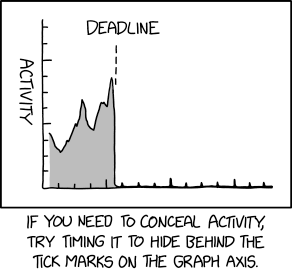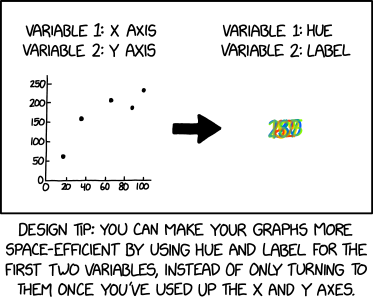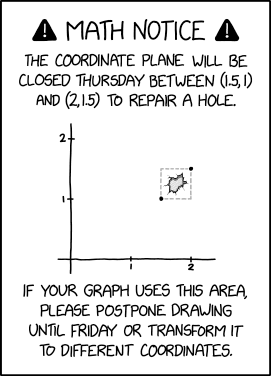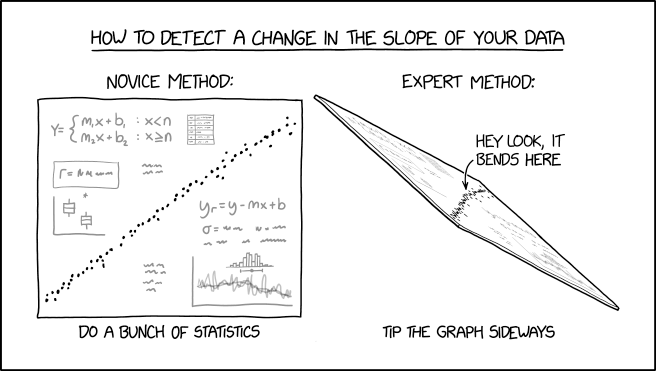Great! Write a post about it, and twelve into details, providing graphs, or stats on how disk “I/O can kill your application(s) no matter what”.
Pretty happy with my zs-blog-template starter kit for creating and maintaining your own blog using zs 👌 Demo of what the starter kit looks like here – Basic features include:
- Clean layout & typography
- Chroma code highlighting (aligned to your site palette)
- Accessible copy-code button
- “On this page” collapsible TOC
- RSS, sitemap, robots
- Archives, tags, tag cloud
- Draft support (hidden from lists/feeds)
- Open Graph (OG) & Twitter card meta (default image + per-post overrides)
- Ready-to-use 404 page
As well as custom routes (redirects, rewrites, etc) to support canonical URLs or redirecting old URLs as well as new zs external command capability itself that now lets you do things like:
$ zs newpost
to help kick-start the creation of a new post with all the right “stuff”™ ready to go and then pop open your $EEDITOR 🤞
@kat@yarn.girlonthemoon.xyz it is not showing for me, on a validator. Missing something?
ProcessOne: ejabberd 25.07
Release Highlights:
This release focus on integration in a wider federated network, with support for spam fighting features, better compliance with Matrix network and native support for PubSub Server Information to have your server count as part of the wider XMPP network (for example, you can register your server on XMPP Network Graph).
- **Spam filter … ⌘ Read more
#ShowYourStripes day, here are mine.
@urlyman@urlyman https://mastodon.social/@urlyman/114720462376167356
Study reveals stark differences in life expectancy across US states over the past century
Colin Poitra, Staff Writer - Medical Press
_Stephan: Look at the graph at the head of this article. What do you notice? I have been telling you for 30 years that by every objective measure I can find, from happiness to literacy to life expectancy, Republican governance is always inferior to Democratic governance, even as flawed as it often is. … ⌘ Read more
圖解 AI 三大核心技術:RAG、大模型、智能體
大模型中的 Transformer 與混合專家(MoE)5 種大模型微調技術傳統 RAG 與 Agentic RAG 對比5 種經典的智能體設計模式5 大文本分塊策略智能體系統的 5 個等級傳統 RAG vs HyDERAG vs Graph RAGKV caching ⌘ Read more
Racing into 2025 with new GitHub Innovation Graph data
Discover the latest trends and insights on public software development activity on GitHub with the quarterly release of data for the Innovation Graph, updated through December 2024.
The post Racing into 2025 with new GitHub Innovation Graph data appeared first on [The GitHub Blog](ht … ⌘ Read more
@kat@yarn.girlonthemoon.xyz Pointers can be a bit tricky. I know it took me also quite some time to wrap my head around them. Let my try to explain. It’s a pretty simple, yet very powerful concept with many facets to it.
A pointer is an indirection. At a lower level, when you have some chunk of memory, you can have some actual values sitting in there, ready for direct use. A pointer, on the other hand, points to some other location where to look for the values one’s actually after. Following that pointer is also called dereferencing the pointer.
I can’t come up with a good real-world example, so this poor comparison has to do. It’s a bit like you have a book (the real value that is being pointed to) and an ISBN referencing that book (the pointer). So, instead of sending you all these many pages from that book, I could give you just a small tag containing the ISBN. With that small piece of information, you’re able to locate the book. Probably a copy of that book and that’s where this analogy falls apart.
In contrast to that flawed comparision, it’s actually the other way around. Many different pointers can point to the same value. But there are many books (values) and just one ISBN (pointer).
The pointer’s target might actually be another pointer. You typically then would follow both of them. There are no limits on how long your pointer chains can become.
One important property of pointers is that they can also point into nothingness, signalling a dead end. This is typically called a null pointer. Following such a null pointer calls for big trouble, it typically crashes your program. Hence, you must never follow any null pointer.
Pointers are important for example in linked lists, trees or graphs. Let’s look at a doubly linked list. One entry could be a triple consisting of (actual value, pointer to next entry, pointer to previous entry).
_______________________
/ ________\_______________
↓ ↓ | \
+---+---+---+ +---+---+-|-+ +---+---+-|-+
| 7 | n | x | | 23| n | p | | 42| x | p |
+---+-|-+---+ +---+-|-+---+ +---+---+---+
| ↑ | ↑
\_______/ \_______/
The “x” indicates a null pointer. So, the first element of the doubly linked list with value 7 does not have any reference to a previous element. The same is true for the next element pointer in the last element with value 42.
In the middle element with value 23, both pointers to the next (labeled “n”) and previous (labeled “p”) elements are pointing to the respective elements.
You can also see that the middle element is pointed to by two pointers. By the “next” pointer in the first element and the “previous” pointer in the last element.
That’s it for now. There are heaps ;-) more things to tell about pointers. But it might help you a tiny bit.
That’s a wrap: GitHub Innovation Graph in 2024
Discover the latest trends and insights on public software development activity on GitHub with the release of Q2 & Q3 2024 data for the Innovation Graph.
The post That’s a wrap: GitHub Innovation Graph in 2024 appeared first on The GitHub Blog. ⌘ Read more
@codebuzz@www.codebuzz.nl I have some shell scripts that handle some of the log formatting details, but I mostly write my mesages by hand. Lately I’ve been browsing twtxt.net since they aggregate most of the known network. I have a couple of demo aggregators sitting around, but I’m in the middle of some infra rebuilds so a lot of my services are offline rn. They’re both built on a simple social graph analysis that extracts urls for your direct follows the follows listed on each of those feeds (friend-of-a-friend replication). certain formatting operations are awkward with my setup, so I may write an app of some kind in the future. likely gemini-based, but I have a number of projects ahead of that one in the queue.
How researchers are using GitHub Innovation Graph data to estimate the impact of ChatGPT
An interview with economic researchers who are applying causal inference techniques to analyze the effect of generative AI tools on software development activity.
The post [How researchers are using GitHub Innovation Graph data to estimate the impact of ChatGPT](https://github.blog/2024-07-17-how-researchers-are-using-github-innovation-graph-data-to-estimate-t … ⌘ Read more
How to See Individual Core CPU Usage on Mac with powermetrics
There are various ways to monitor CPU usage on a Mac, with perhaps the two most common being with Activity Monitor on the graphical interface side of things, and htop or top on the command line side. While you can show an optional core graph in Activity Monitor, and htop will show CPU core activity … Read More ⌘ Read more
Tick Marks
 ⌘ Read more
⌘ Read more
Explore the seasons of software development with four full years of data
Discover the latest trends and insights on public software development activity on GitHub with the release of Q4 2023 data for the Innovation Graph.
The post Explore the seasons of software development with four full years of data appeared first on [The GitHub Blog](https://github.blog … ⌘ Read more
I noticed that some of my software projects have a rather long lifetime, so I made a little graph:
Ignite Realtime Blog: Creating the XMPP Network Graph
At the risk of sounding like an unhinged fanboy: XMPP is pretty awesome!
I’ve been involved in one way or another with XMPP, the network protocol that is an open standard for messaging and presence, for the last two decades. Much of that revolves around development of Openfire, our XMPP-based real-time communications server.
TL;DR:
- I built a thing:[https://xmppnetwork.goodbytes.i … ⌘ Read more
New data and visualizations highlight the resilience of international developer collaboration
Discover the latest trends and insights on public software development activity on GitHub with the release of Q3 2023 data for the Innovation Graph.
The post [New data and visualizations highlight the resilience of international developer collaboration](https://github.blog/2024-01-18-new-data-and-visualizations-highlight-the-resilience-of-internation … ⌘ Read more
GitHub Innovation Graph Q2 2023 Data Release
Discover the latest trends and insights on public software development activity on GitHub with the release of Q2 2023 data for the Innovation Graph.
The post GitHub Innovation Graph Q2 2023 Data Release appeared first on The GitHub Blog. ⌘ Read more
Compact Graphs
 ⌘ Read more
⌘ Read more
Announcing the GitHub Innovation Graph
Explore a universe of data about how the world is building software together on GitHub.
The post Announcing the GitHub Innovation Graph appeared first on The GitHub Blog. ⌘ Read more
Graphs, Vectors and Machine Learning - Computerphile ⌘ Read more
Memgraph Docker Extension: Empowering Real-Time Analytics with High Performance
Learn how using Memgraph as a Docker Extension offers a powerful and efficient way to leverage real-time analytics from a graph database. ⌘ Read more
On my blog: Graphs with Chart.js https://john.colagioia.net/blog/2023/05/10/chart-js.html #linux #programming #techtips
Distributed Cloud-Native Graph Database with NebulaGraph Docker Extension
Let’s take a look at NebulaGraph and how this modern, open source database can help your organization store and query complex data relationships. ⌘ Read more
Coordinate Plane Closure
 ⌘ Read more
⌘ Read more
Bypassing OGNL sandboxes for fun and charities
Object Graph Notation Language (OGNL) is a popular, Java-based, expression language used in popular frameworks and applications, such as Apache Struts and Atlassian Confluence. Learn more about bypassing certain OGNL injection protection mechanisms including those used by Struts and Atlassian Confluence, as well as different approaches to analyzing this form of protection so you can harden similar systems. ⌘ Read more
ahh this is useful https://go.dev/doc/modules/managing-dependencies. the go culture doesn’t typically have large dependency graphs like Ruby or JS.
ahh this is useful https://go.dev/doc/modules/managing-dependencies. the go culture doesn’t typically have large dependency graphs like Ruby or JS.
Change in Slope
 ⌘ Read more
⌘ Read more
It’s not fair! The graph was supposed to peak in 2047, not 2028!
Knowledge Graphs - Computerphile ⌘ Read more
Git’s database internals II: commit history queries
This post explores Git commit history as a database where ‘git log’ is the query language. Learn about Git’s custom query index – the commit-graph file – and how to make sure it’s enabled in your repositories. ⌘ Read more
Extend your dependency information in the GitHub Dependency Graph with new GitHub Actions
New Actions from Anchore, NowSecure, SBT, and Trivy are now available to create a more comprehensive GitHub Dependency Graph. ⌘ Read more
Creating a more comprehensive dependency graph with build time detection
Expand the completeness of your dependency graph by using the dependency submission API, which will create more comprehensive alerts on supply chain vulnerabilities ⌘ Read more
with resolving inconsistent graph preferences, does the portion of non-uniquely resolvable preferences shrink with the number of options? in other words: for the set 𝓖_n of all graphs with n nodes, and the set U(𝓖_n) of those graphs with a unique path-graph with a smallest graph-edit distance, is |U(𝓖_n)|/𝓖n<|U(𝓖{n+1})|/|𝓖_{n+1}|?
graph names that sound like war crimes:
Inside every large graph is a small graph dying to get out. Tools for visualizing a codebase | Hacker News
for a given graph G, there is a set of graphs \mathcal{G} so that for every G’ ∈ \mathcal{G}, the transitive closure of G’ is G. does \mathcal{G} contain only one element?
a vector field is just a kind of graph, mathematicians are silly for inventing unnecessary stuff
continuous graph theory
Dependency graph now supports GitHub Actions
The dependency graph helps developers and maintainers understand the code they depend on, and now includes GitHub Actions! ⌘ Read more
喜报!GoFrame 开源项目获得,2021 年度开源中国最受欢迎开源项目奖!
喜报!GoFrame 开源项目获得,2021 年度开源中国最受欢迎开源项目奖!
感谢感谢所有社区团队小伙伴的辛勤付出!
… ⌘ Read moreIntroducing stack graphs
Precise code navigation is powered by stack graphs, a new open source framework that lets you define the name binding rules for a programming language. ⌘ Read more
Graph of the routed autonomous systems (as seen in IPv4 announcements by RIS on Sep 25, 2014) ⌘ Read more
A framework for building Open Graph images ⌘ Read more…
many examples of #metapost with pictures [[http://tex.loria.fr/prod-graph/zoonekynd/metapost/metapost.html]] #links
Secure at every step: How GitHub’s dependency graph is generated ⌘ https://github.blog/2020-08-04-secure-at-every-step-how-githubs-dependency-graph-is-generated/
Viewing Matrices & Probability as Graphs https://www.math3ma.com/blog/matrices-probability-graphs
Graphs are to categories as lists are to monoids https://alhassy.github.io/PathCat/
New repository: aquilax/biograph - Life graphing library
Mathematicians Explore Mirror Link Between Two Geometric Worlds | Quanta Magazine https://www.quantamagazine.org/decades-old-graph-problem-yields-to-amateur-mathematician-20180417/
The citation graph is one of humankind’s most important intellectual achievements / Boing Boing https://boingboing.net/2018/04/14/open-graphs.html
A graph that is made by perceiving it – Mind Hacks https://mindhacks.com/2018/02/25/a-graph-that-is-made-by-perceiving-it/
Bad idea of the day: Adversarial social graphs. 99% similar to your actual graph, but friending one guy makes Facebook think you’re actually Al Gore.
Wikipedia graph mining: dynamic structure of collective memory http://blog.miz.space/research/2017/08/14/wikipedia-collective-memory-dynamic-graph-analysis-graphx-spark-scala-time-series-network/
#roster uses a junction table for tags insteaf of like, so #graph does not match #graphite. Should have done that from the start.
#roster uses a junction table for tags insteaf of like, so #graph does not match #graphite. Should have done that from the start.
@kas@enotty.dk Wow wttr.in is really great! I used finger berlin@graph.no until now. #weather
@kas@enotty.dk Wow wttr.in is really great! I used finger berlin@graph.no until now. #weather